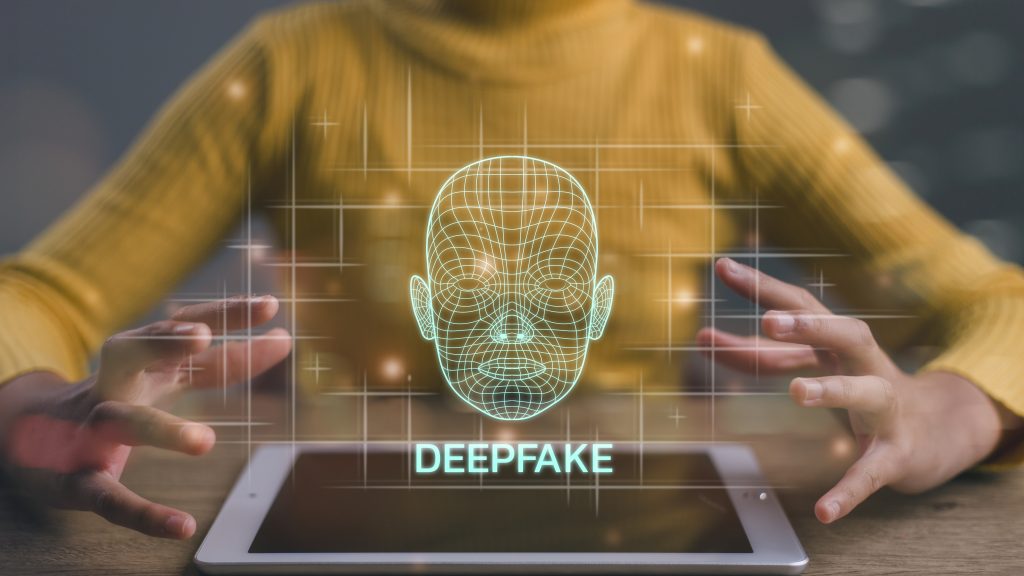Deepfake technology is rapidly reshaping how we perceive reality online. Through the power of Artificial intelligence, it enables the creation of highly realistic—but entirely fake—videos, images, and audio recordings. While it opens up new creative possibilities, the rise of Deep fake Technology also brings alarming risks tied to misinformation, manipulation, and fraud.
In this blog, we dive deep into what deepfakes are, how they work, their legitimate and malicious uses, and how businesses can defend themselves in a world where seeing is no longer believing.

What Are Deepfakes?
The term deepfake is a combination of “deep learning” and “fake.” At its core, deep fake technology uses advanced machine learning algorithms to generate synthetic media that mimics real people’s faces, voices, or movements.
Deepfakes can create realistic impersonations that are indistinguishable from actual footage. This makes them a powerful—and dangerous—tool in the wrong hands.
How Deepfake Technology Works
At the heart of deep fake technology are Generative Adversarial Networks (GANs) and autoencoders.
- GANs consist of two AI systems: one generates fake content, and the other evaluates it. Through continuous learning, the generator improves until the output becomes indistinguishable from reality.
- Autoencoders learn to compress and reconstruct data (like facial features), which enables face-swapping and manipulation at a pixel-perfect level.
The result is highly realistic video and audio that can be nearly impossible to distinguish from the real thing—especially without specialized tools.
Modern tools require only a few seconds of audio or a handful of images to train deepfake models—meaning anyone with basic tools can create convincing fakes within hours.
Real-World Uses of Deepfake Technology
1. Legitimate Applications
- Entertainment: Used in movies to recreate actors or historical figures.
- Gaming & Virtual Reality: Enhancing realism with AI-generated characters.
- Education: Creating multilingual, interactive learning materials.
- Customer Service: Personalised AI avatars for virtual assistance.
2. Malicious Applications
- Political Disinformation: Fake speeches or videos of politicians can influence elections and stir unrest.
- Financial Fraud: Deepfake voice calls impersonating CEOs have led to multimillion-dollar scams.
- Non-Consensual Content: Deepfake pornography is a growing issue, often targeting women and public figures.
- Impersonation Attacks: Executives and employees can be impersonated to authorize illegal transfers or access sensitive systems.
The Alarming Rise of Deepfake Threats
Rapid Accessibility
Deepfake software is now widely available. Anyone with a smartphone or computer can access apps that require minimal training data to generate high-quality forgeries.
Growing Sophistication
Deepfakes are becoming more convincing, harder to detect, and capable of being used in real time—such as during live video calls or virtual meetings.
Real-World Impacts
Recent incidents include:
- Businesses losing over $35 million in fraud due to voice-based deepfakes.
- Government officials targeted in fake videos spreading false information.
- Fake endorsements used to boost crypto scams or stock manipulation.
How to Identify Deepfakes
While deepfakes are evolving quickly, some telltale signs include:
- Inconsistent blinking or facial movement
- Mismatch between lip-syncing and speech
- Unnatural lighting, shadows, or reflections
- Audio that sounds robotic or flat
- Missing details in hair, teeth, or background elements
Deepfake detection tools are also emerging but are still playing catch-up as deepfake generation becomes more refined.
Defensive Strategies for Businesses
As deepfakes pose a growing risk to trust and communication, businesses must take proactive steps:
1. Awareness & Training
Educate staff—especially in executive, legal, and financial roles—on how to spot and respond to deepfake threats.
2. Advanced Detection Tools
Deploy AI-powered detection systems that analyze digital content for signs of manipulation, anomalies, or metadata inconsistencies.
3. Secure Communication Channels
Use encrypted platforms, identity verification tools, and multi-factor authentication to ensure internal communications are authentic.
4. Incident Response Planning
Have a plan in place for identifying, escalating, and addressing potential deepfake-related incidents, including reputational management.
5. Legal and Policy Compliance
Stay aligned with regulations that govern synthetic media, digital consent, and intellectual property rights. New laws are emerging to address the dangers of deepfake abuse.
Final Thoughts
Deepfake technology represents both an evolution and a threat. While it offers impressive capabilities in entertainment and automation, it also opens the door to unprecedented risks in fraud, reputation damage, and cybersecurity.
With threats evolving quickly, businesses must stay vigilant. Understanding the mechanics behind deepfakes and implementing robust detection and verification systems is not optional—it’s essential.
Contact Creative Networks Today
Are you prepared to defend your organization from the rise of deepfake technology?
At Creative Networks, we provide:
- Cybersecurity audits focused on AI-generated content risks
- Executive training programs on synthetic media awareness
- Implementation of deepfake detection and verification tools
- Policy development aligned with evolving legal standards
Contact Creative Networks today to protect your brand, your data, and your people from deepfake-driven cyber threats.




